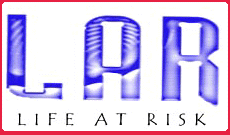
![]()
Habitat This Alaskan island is composed of mountains, forests, bays, inlets and wetlands. The refuge comprises about two-thirds of Kodiak Island. In addition, the refuge encompasses a portion of Afognak Island (50,000 acres) north of Kodiak Island. Kodiak Island has an irregular coastline of bays, insets, and rugged mountains covered with alpine vegetation.
Kodiak National Wildlife Refuge was established in 1941 to protect the habitat of the brown bear. Beside the brown bear there are at least five other native land mammals on Kodiak: red fox, river otter, short-tailed weasle, little brown bat, and tundra vole. Black-tailed deer, beaver and several other species of mammals have been successfully introduced to the island. Bald eagles reside year-round on the refuge in such numbers that they are in view continuously. An estimated two million seabirds inhabit the bays, inlets, and shores. |
 The Kodiak
bears live in only a small section of the world
today, even though they are the biggest of all
omnivores in the world. Their habitats include
small areas along the West Coast of British
Colombia, but the true home of the Kodiak bears
is Kodiak National Wildlife Refuge, or Kodiak
Island, just off the southern coast of Alaska.
The Kodiak
bears live in only a small section of the world
today, even though they are the biggest of all
omnivores in the world. Their habitats include
small areas along the West Coast of British
Colombia, but the true home of the Kodiak bears
is Kodiak National Wildlife Refuge, or Kodiak
Island, just off the southern coast of Alaska. Spruce
forests dominate the northern part of Kodiak
Island and all of the Afognak Island portion of
the refuge. The interior of the refuge is covered
with lush, dense vegetation. Southwestern Kodiak
is covered with hummocks (knolls) of grass. No
place on the 100 X 40 mile island is more than 15
miles from the sea.
Spruce
forests dominate the northern part of Kodiak
Island and all of the Afognak Island portion of
the refuge. The interior of the refuge is covered
with lush, dense vegetation. Southwestern Kodiak
is covered with hummocks (knolls) of grass. No
place on the 100 X 40 mile island is more than 15
miles from the sea.